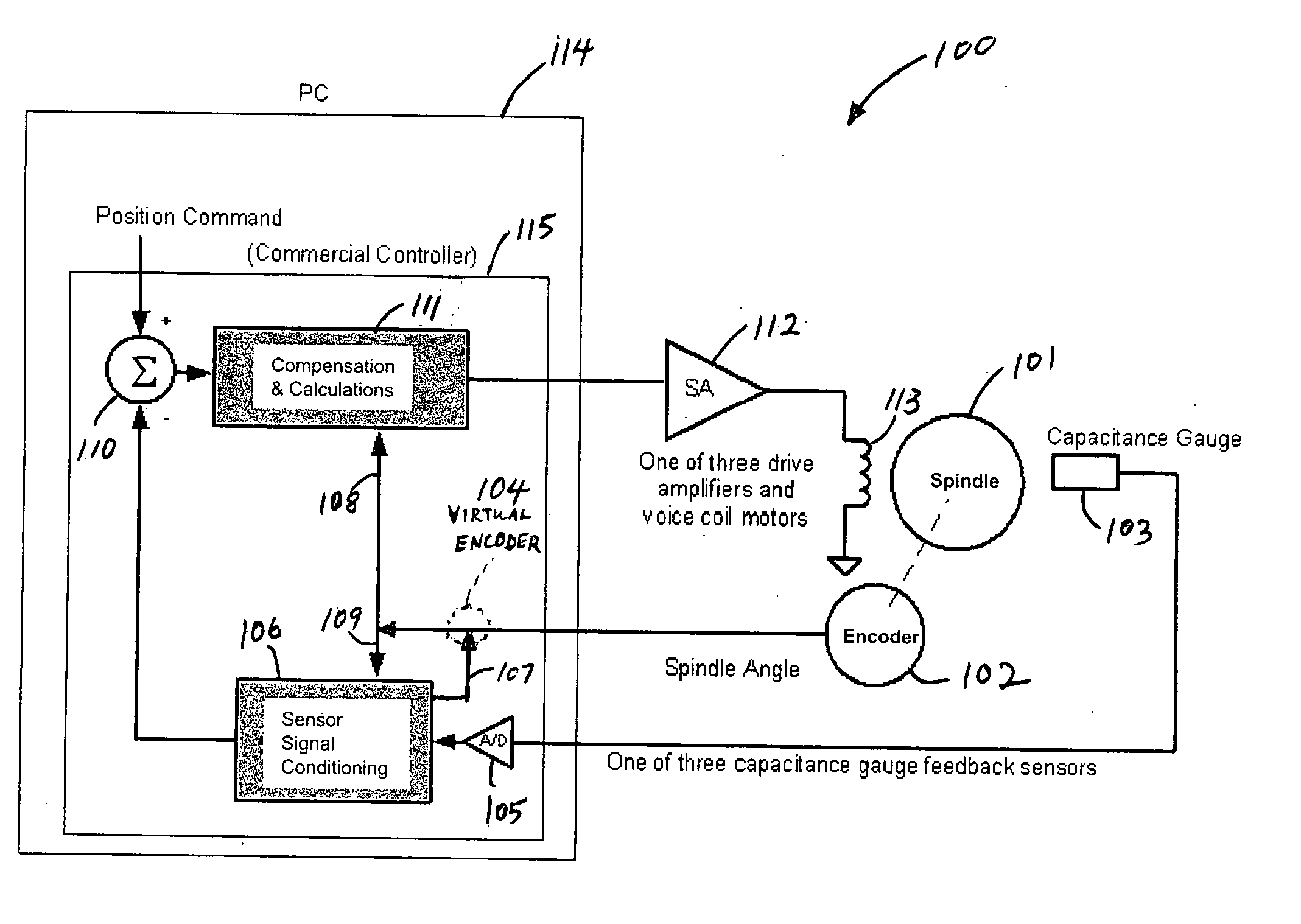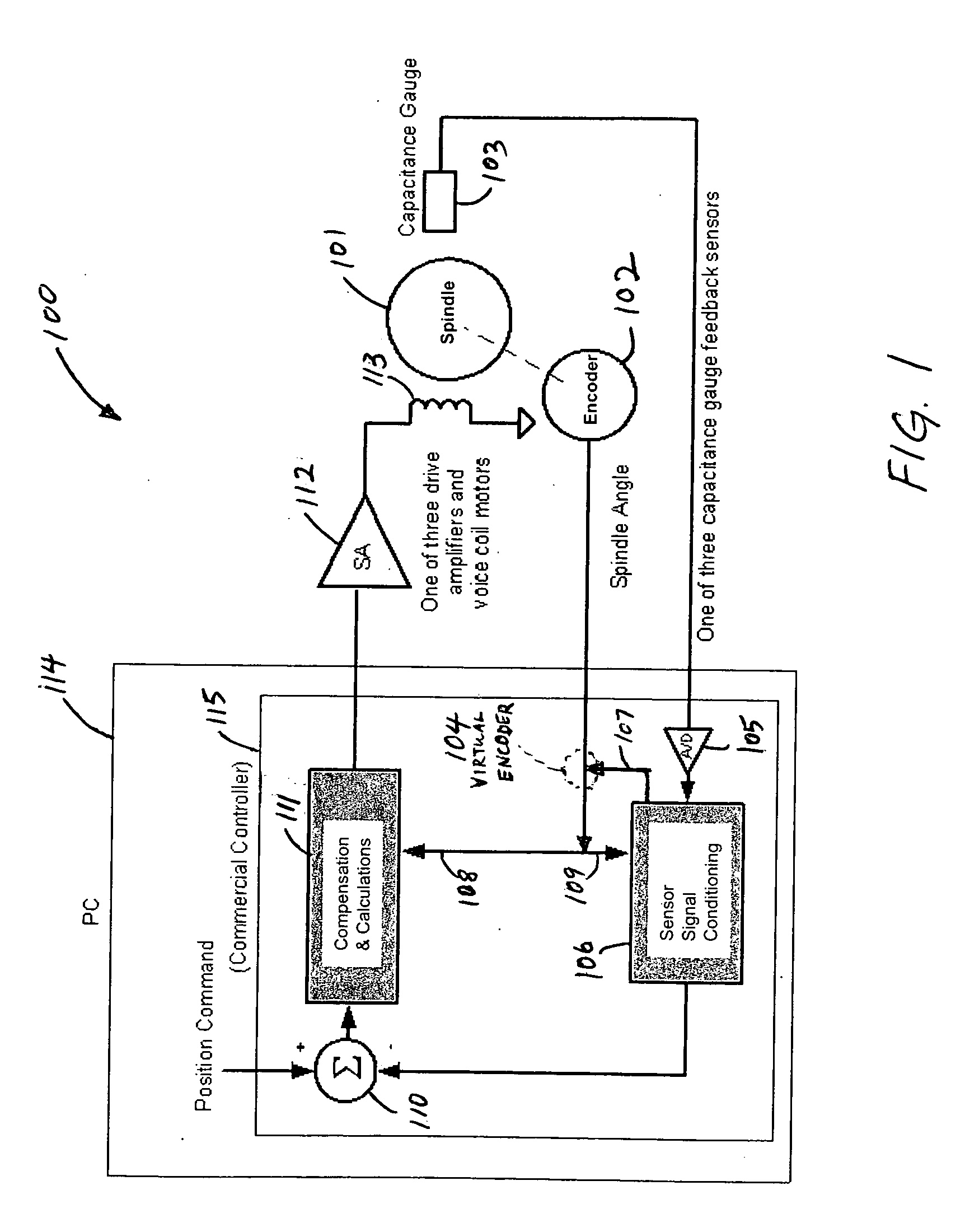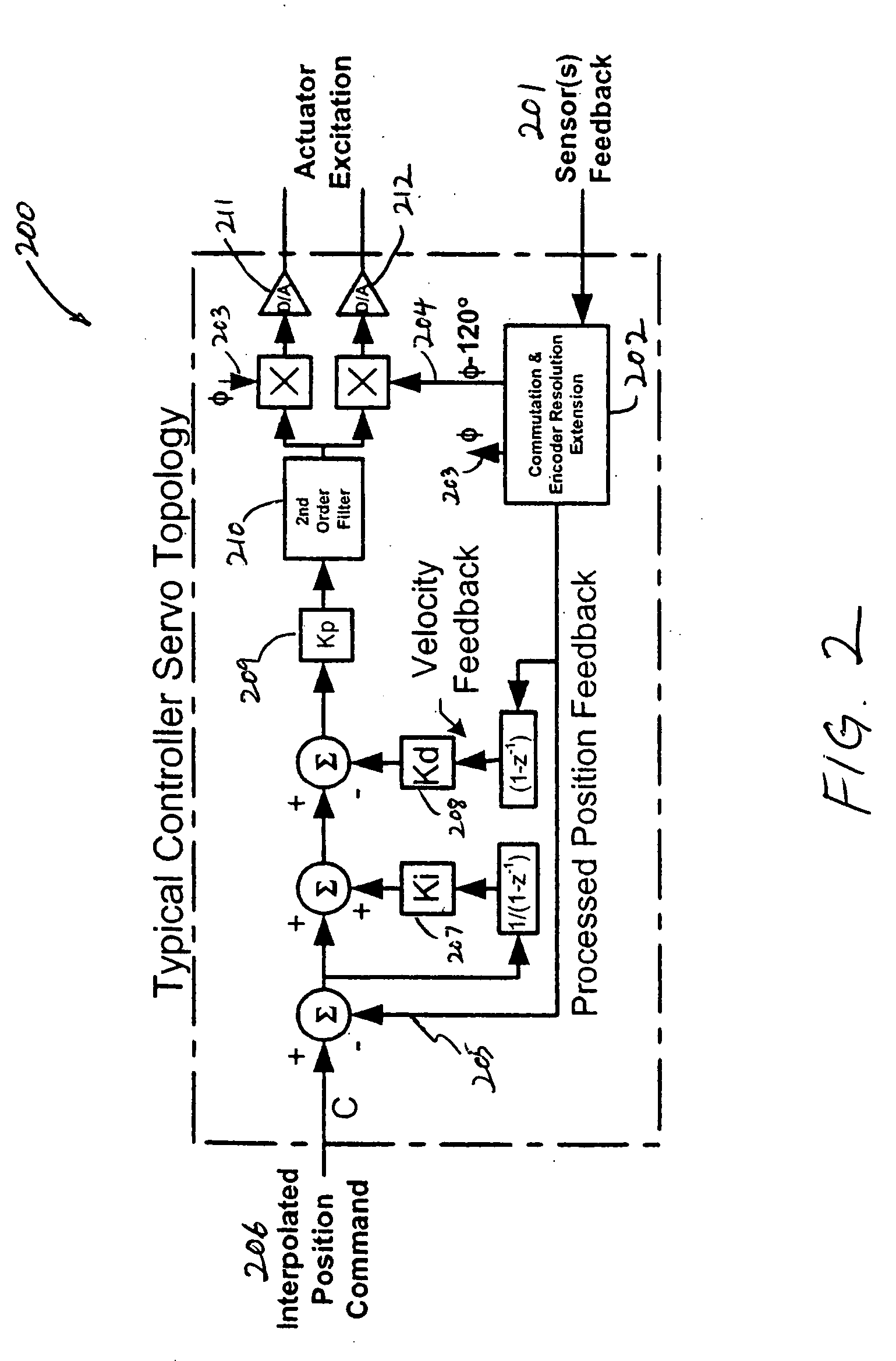Adaptive vibration control using synchronous demodulation with machine tool controller motor commutation
a technology of synchronous demodulation and machine tool controller, applied in the field of adaptive control, can solve the problems of non-rigid body motion of the frame, affecting the measurement tool position, and limiting factors of vibration sources, so as to reduce vibration, reduce vibration, and active dampen the vibration of the spindle housing
- Summary
- Abstract
- Description
- Claims
- Application Information
AI Technical Summary
Benefits of technology
Problems solved by technology
Method used
Image
Examples
Embodiment Construction
[0015] Generally, the present invention is a control system and method for actively dampening, canceling, attenuating, or otherwise reducing vibration in a spindle housing caused by unbalance forces on a rotating spindle so that these forces do not disturb other sensitive machine systems, e.g. the slide servo system or the machine metrology frame. The system and method of the present invention operates to monitor and measure the force-induced spindle-housing motion, determine control signals based on synchronous demodulation, and provide compensation for the measured displacement to cancel or otherwise reduce or attenuate the vibration. In particular, the synchronous demodulation technique is used in the present invention to recover a measured machine displacement signal related only to the rotation of a machine tool spindle, and consequently reject measured displacement not related to spindle motion or synchronous to a cycle of revolution. Furthermore, the controller preferably act...
PUM
 Login to View More
Login to View More Abstract
Description
Claims
Application Information
 Login to View More
Login to View More - R&D
- Intellectual Property
- Life Sciences
- Materials
- Tech Scout
- Unparalleled Data Quality
- Higher Quality Content
- 60% Fewer Hallucinations
Browse by: Latest US Patents, China's latest patents, Technical Efficacy Thesaurus, Application Domain, Technology Topic, Popular Technical Reports.
© 2025 PatSnap. All rights reserved.Legal|Privacy policy|Modern Slavery Act Transparency Statement|Sitemap|About US| Contact US: help@patsnap.com



